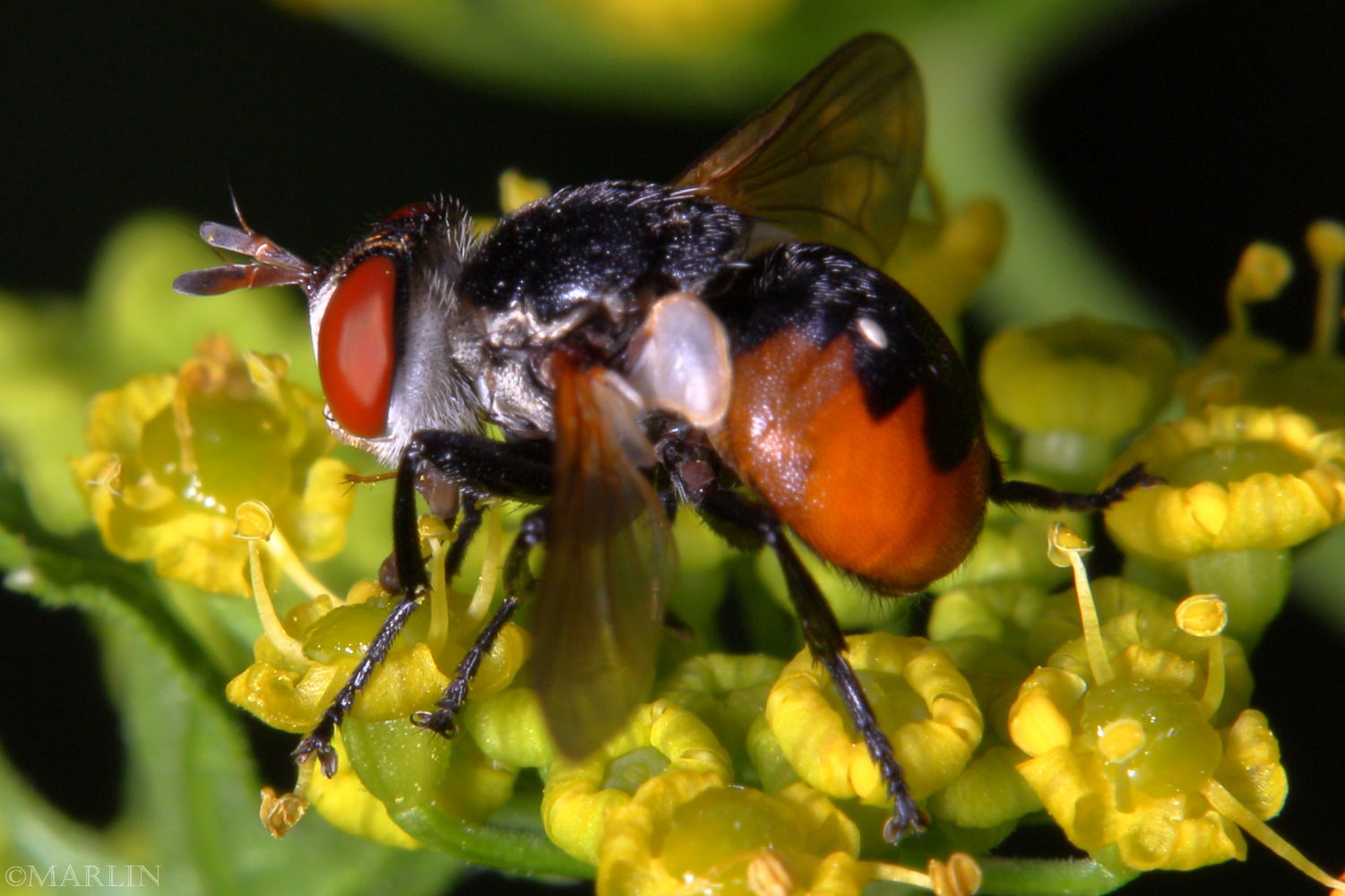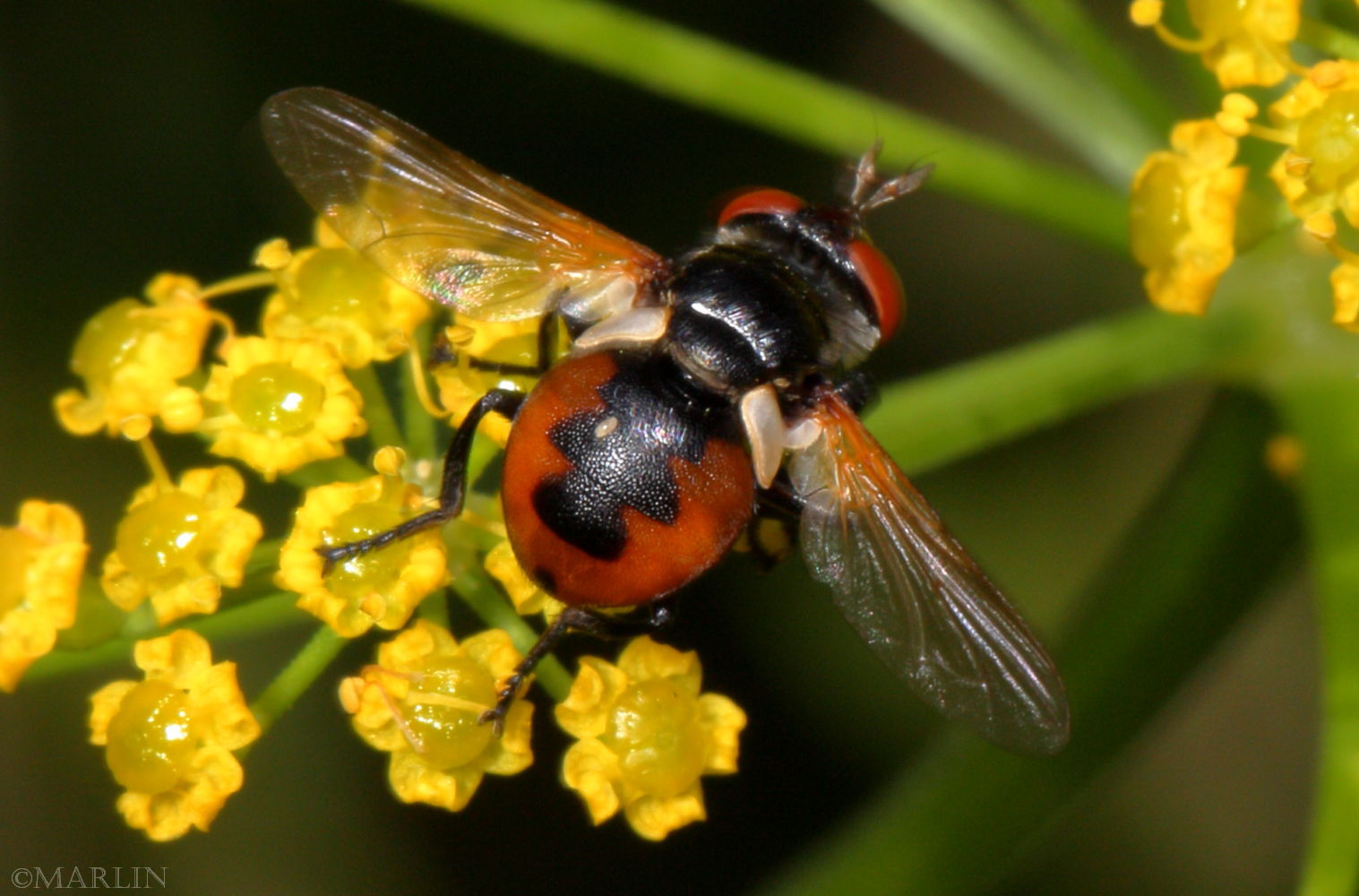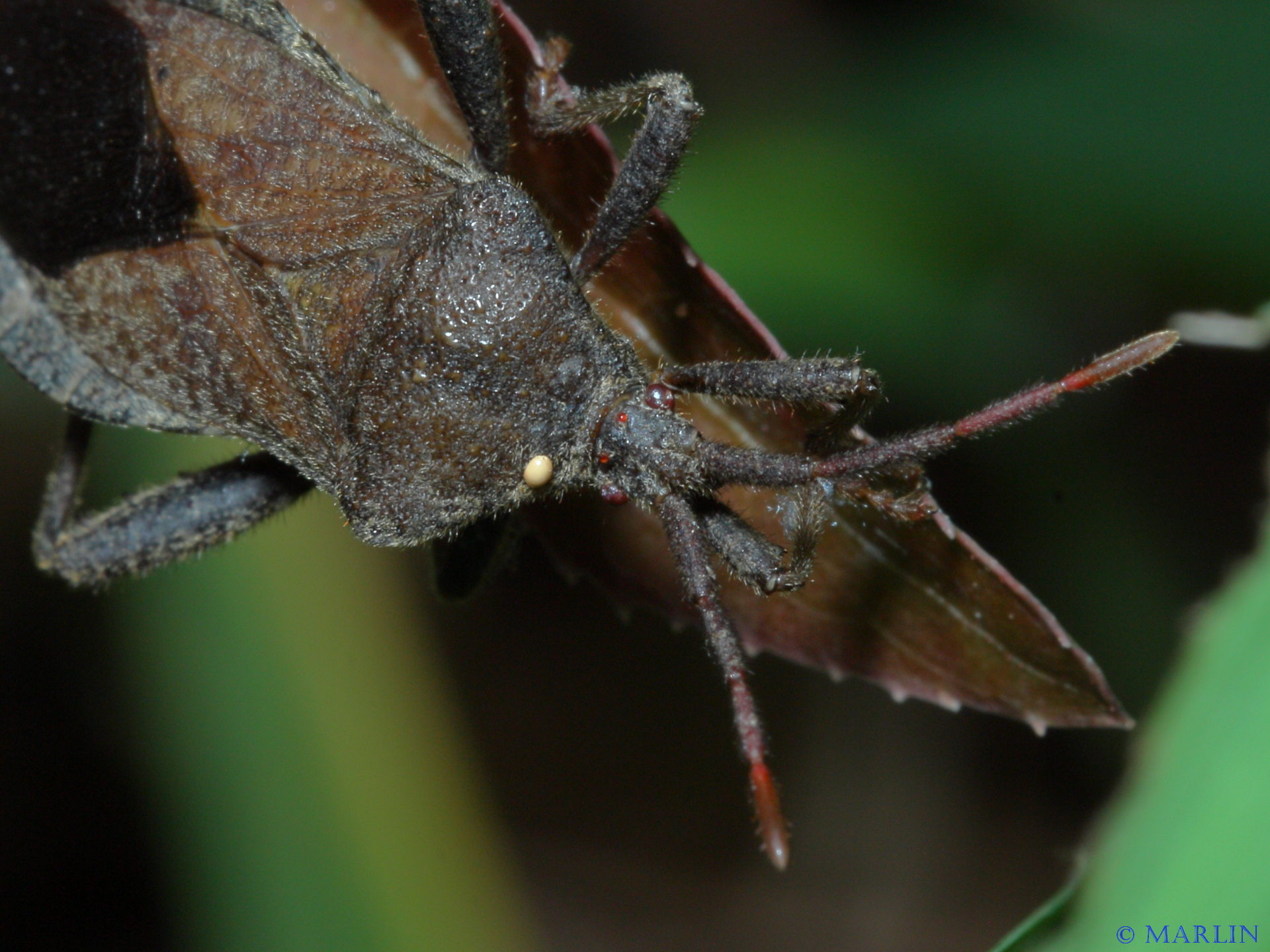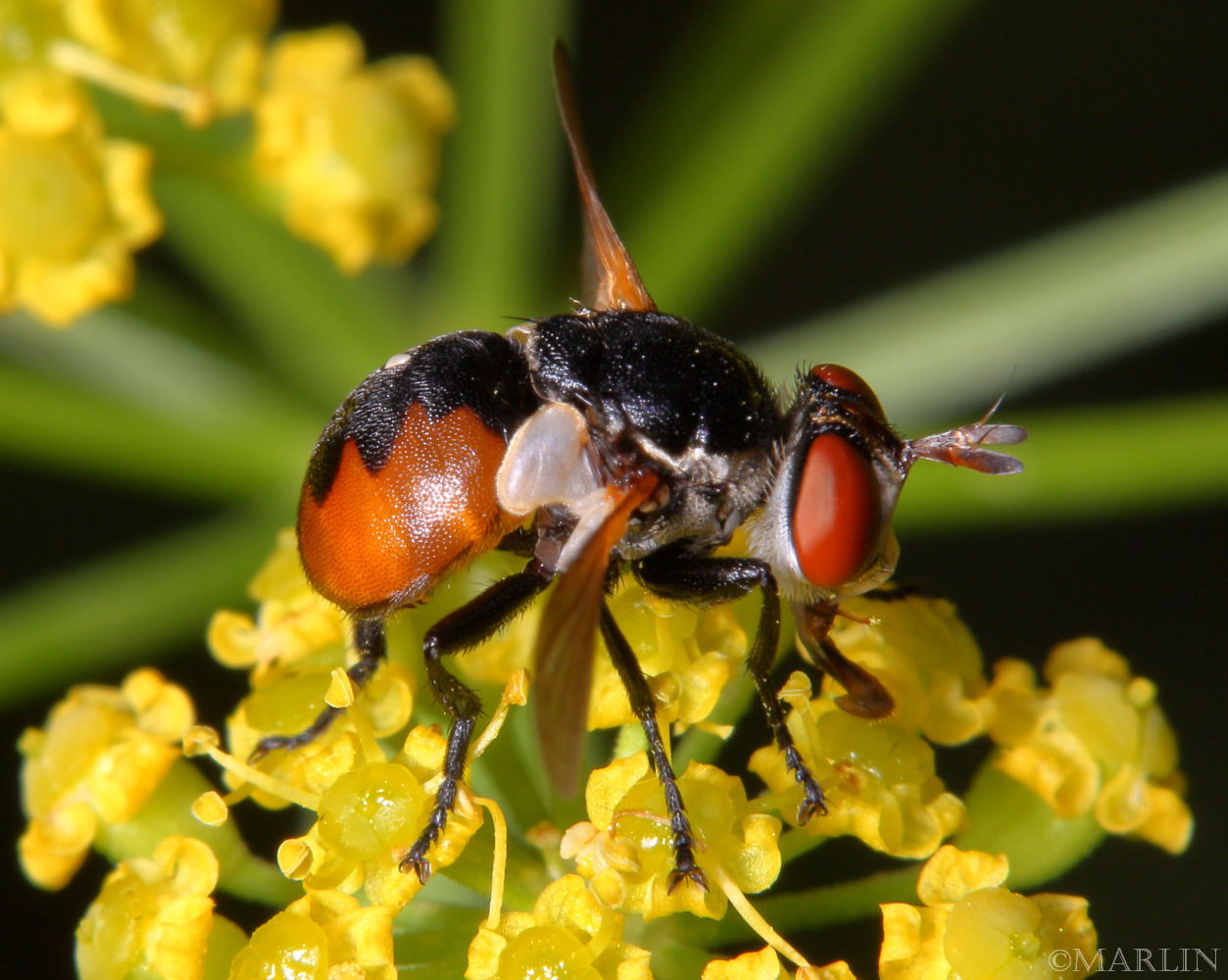Tachinid Fly – Gymnosoma fuliginosa
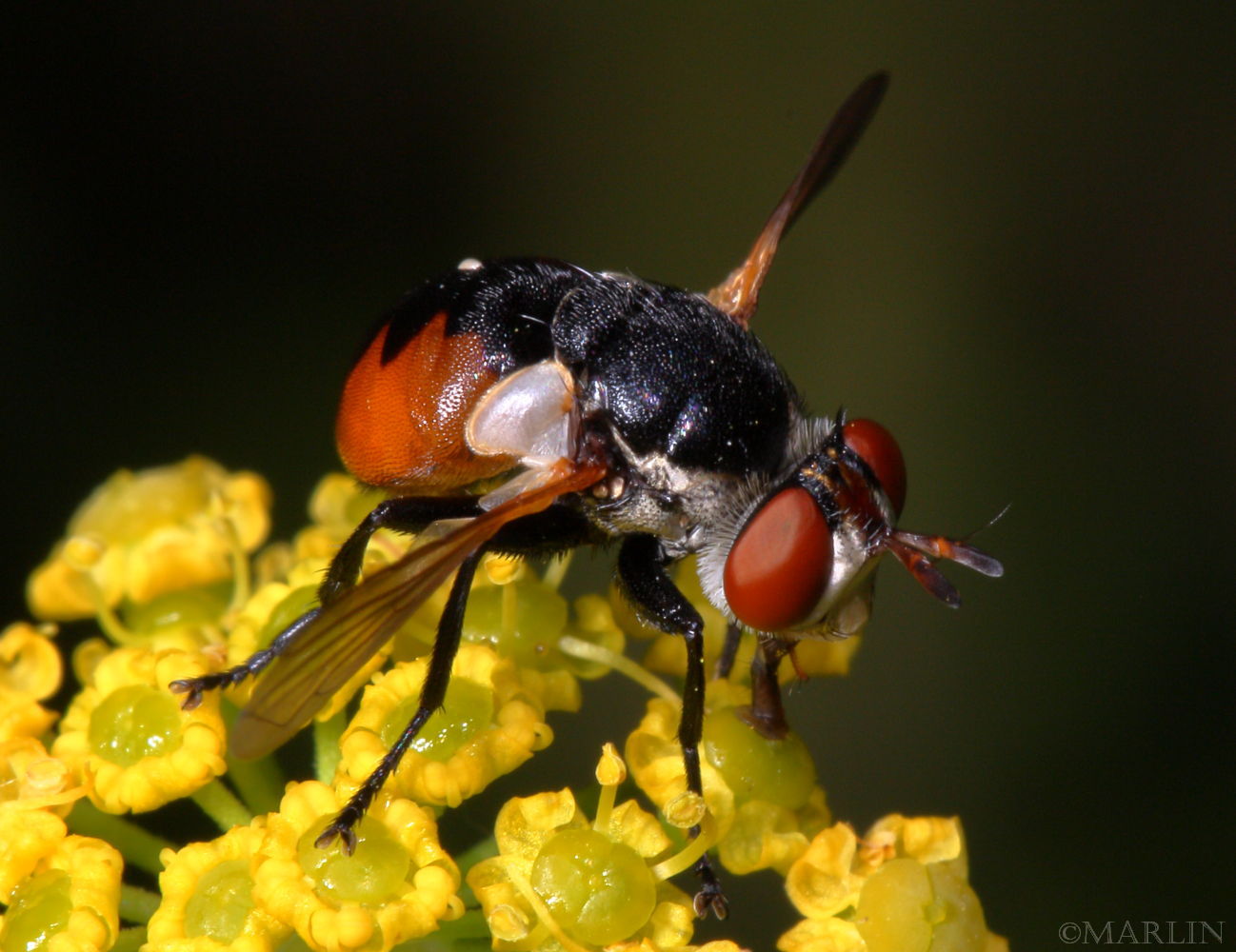 Tachinid karma: this fly has itself been parasitized by another insect – see the tiny egg pasted to its abdomen?
Tachinid karma: this fly has itself been parasitized by another insect – see the tiny egg pasted to its abdomen?
Family Tachinidae has been studied extensively and many of their parasite-host interactions have become well-known and exploited in commercial biological control of many crop pests. All known tachinid fly larvae are parasitic on other arthropods, almost exclusively on other insects [1].
Thaddeus William Harris, M.D., a noted American naturalist and entomologist, published the first host record for the Tachinidae in 1841.
Harris was a close friend of Nicholas Marcellus Hentz (1797-1856), himself a pioneering arachnologist.
Harris practiced as a physician at Milton Hill, Massachusetts until the 1830’s, when he followed his father’s footsteps and became the Librarian at Harvard.
In 1831, he was appointed a commissioner for a botanical and zoological survey of Massachusetts, and he would produce a catalog of the insects in that state, listing an astonishing 2,350 different species [2,3].
Subfamily Phasiinae is among the most primitive of the tachinid flies. They lack a uterus, or ovisac, that allows for storage of eggs undergoing embryonic development. They deposit their undeveloped eggs either directly onto the skin or partially or completely insert them inside the host.
Eggs maturing on the outside of the host remain vulnerable for several days and are subject to removal by the host or are lost when the bug molts.
Many other species broadcast tiny eggs onto plant substrate already damaged by host caterpillars – such eggs gain entry to the host by being ingested, somehow managing to slip past the chewing mouthparts to be “activated” by digestive juices to penetrate the host through the gut wall. Thousands of these eggs are broadcast only on plants specific to the required host. A variation used by most of the Tachininae leaves eggs in places mostly likely to be visited by victims; the larvae wait in ambush, protected from desiccation by a sclerite suit of armor. They attach themselves and burrow into the host as soon as one blunders into range [1].
References
- D.M Wood, Manual of Neararctic Diptera Vol. 2, Tachinidae
- The Kouroo Contexture, “People mentioned in (Henry David Thoreau‘s) ‘The Maine Woods’ “
- Archives, Gray Herbarium Library, Harvard University Herbaria, “Harris, Thaddeus William”
- Paul Henri Arnaud, U.S. Science and Education Administration, California Academy of Sciences, “A host-parasite catalog of North American Tachinidae (Diptera)”

